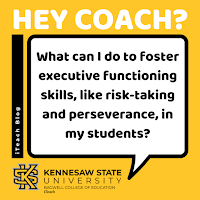You Can’t Win in a Classroom: The Benefit of the Individualized Path
The wrong analogy at the wrong time
Education tends to lend itself to the term “race” a lot, maybe the most influential the 2009 “Race to the Top” campaign to reward innovation in education. Education espouses acceptance and even encouragement of otherness with which this metaphor doesn’t align. Races are for sprinters or marathoners to win or lose. The classroom and education are places to experiment and fail and learn, where failure and coming in second shouldn’t be demonized. We wouldn’t punish the second student to finish an exam with less than 100% if they deserve their 100. They learned the lesson. The individualized path champions self-advocacy, perseverance, and, ultimately, understanding of knowledge for students.
30 Lesson Plans?! Not what we have in mind
A better analogy than a race, would be a bowling alley where students are the bowling balls, each with their own path to knock all of the pins down. While some students roll themselves right through all 10 pins, another student might require bumpers, and another might roll into the wrong pins, but then correct themself. The thought of 30 lesson plans, or one per student, is frightening, and not the purpose of an individualized path. The teacher’s job is to help the students understand what path they want and need to take. Teaching students executive function, the ability to learn and think about learning on their own, is just as important as being a content expert.
4 Steps to Individualizing Student Paths
- Goal setting: Allow students to set their own goals using positive language and expectations. “I can” statements are a great place to start, and offer tangible things that students should be able to do once they’ve learned something.
- Question: How do students know what they should be able to do? Use a lesson to break down standards, and have students reword and create I can statements from them. Use sites like rewordify to create student-friendly standards. Be transparent and give students the behind-the-scenes view of what it’s like to be a teacher!
- Planning: Admittedly, this seems similar to goal-setting, but it’s a little more nuanced. Teach students how to plan to meet their goals. Utilize checklists, calendars, and scaffolding of goals to help students build up to completing whole projects. Google Keep and Checkli might be helpful in setting these up.
- Question: Should students plan whole calendars immediately? No. Release the reins as students begin to demonstrate that they can handle the material and autonomy. Allow students to plan when and how they’ll study, and hold them to it, then allow them to plan larger and more diverse standards.
- Cross-Curricular Credit/Beyond the Classroom: You’ve probably wanted to work with that super awesome art teacher or involved science teacher for a long time. If students are essentially completing an art project to display
 their understanding, see if they might have some time in art to complete it. Encourage your students to utilize experts inside the building (another math teacher) or outside of the building (a scientist on Twitter). Once they have ideas, the art of teaching is helping them run with it. If they want to learn about castle architecture, offer them some goggles and a virtual field trip, if they want to learn about space, Skype in an astronaut. The world of technology has shrunk our physical world and grown our connected one.
their understanding, see if they might have some time in art to complete it. Encourage your students to utilize experts inside the building (another math teacher) or outside of the building (a scientist on Twitter). Once they have ideas, the art of teaching is helping them run with it. If they want to learn about castle architecture, offer them some goggles and a virtual field trip, if they want to learn about space, Skype in an astronaut. The world of technology has shrunk our physical world and grown our connected one.- Question: How do I know what they’re on the right path for meeting their goals? Check in on students periodically. Make sure they’re working through their checklists. Then, consider how you learn about any given topic and use that format. I use Google a lot, look up videos and tutorials, and try it myself. Failure is part of that cycle, but so is tenacity, and redoing it.
- They show what they know: Reflection. Once students reach an appropriate learning destination, give them an opportunity to reflect on it. Reflection shows the teacher that they understand. It gives them insight about how they arrived at that understanding, and offers them a chance to show off. Did they learn to play the flute, draw blood, their times tables, or how to dissect a frog? Have them explain how they did it, and what it taught them.
- Question: How do we give grades? Another component of planning is helping students build meaningful rubrics. Having
 students grade their own learning and justify it is an important piece of learning. Teachers reflect on their learning all of the time, students should too.
students grade their own learning and justify it is an important piece of learning. Teachers reflect on their learning all of the time, students should too.
- Question: How do we give grades? Another component of planning is helping students build meaningful rubrics. Having

Max Gertz
Instructional Technology Specialist
Kennesaw State University iTeach
@therealmrgertz




Comments
Post a Comment